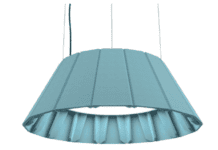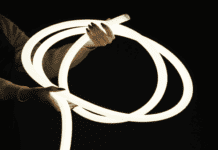By Marty Organ
Maybe you’ve been there. You get a call from a tenant, and they’re upset because the lighting you installed a few months ago stopped working. Or worse, it flat-out broke. They’re a long-time tenant, but you can tell they are doubting your expertise.
However, your expertise as a facilities manager shouldn’t be questioned; it’s the lighting manufacturers that make all sorts of claims about their products that just aren’t proven.
Replacing bad lighting costs time and money that you don’t have. For building occupants, it possibly means a stop in operations and productivity, especially at a 24/7 operations facility like a warehouse. Alternatively, it could mean poor lighting in important locations like parking lots or garages.

Lighting must be tested — extensively — to make sure it operates the way manufacturers state. However, many are not, which in the end, means more money and stress on your shoulders.
High-quality LED lighting should last tens of thousands of hours. If everything’s been properly tested and certified, it removes the guesswork. This means you don’t have to worry about getting that call, questioning your installation of a faulty product, let alone your professional reputation.
How can facilities managers be sure that the LED lighting products they’ve installed have been thoroughly tested? Look for these certifications:
The UL Logo: Lighting with this stamp means that Underwriters Laboratories, the largest independent safety company in the world, decided that the product is safe to use. No shocks, no surprises.
The DLC Designation: The DesignLights Consortium® (DLC) DLC is your go-to certification for commercial lighting. It’s all they do, which means they have very high standards, from quality to energy efficiency to warranty. In fact, a product must have a 5-year warranty to earn DLC recognition.
Some products lack certification due to time to market and testing costs. Every day a product is being tested (or worse, must be re-tested) is another day companies that don’t care about the quality of a product are losing revenue. With the lighting industry already facing tight margins, skipping the testing phase means obtaining the highest margins possible. However, it also means providing customers with an untested product, leading to future problems for facilities managers and building owners.
The solution? Look for the lighting companies who have their own testing facilities on-site. A company with an on-site, certified testing facility can cut testing costs and time by about 50% and reduce the time it takes to get products to market. The result? Lower prices, more sales and stability, plus — most importantly — guaranteed honored warranties for you, the customer.
The Bottom Line On LED Testing
When facilities managers examine who they’re going to source lighting products from, they should make sure it passes these seven critical stress tests:
- Thermal: This test simulates high heat and humidity environments, making sure that lighting withstands the temperatures they’re promised to. It also tests the heat of the driver to be sure the fixture won’t over heat and fail in the field.
- Photometry: Ensures light is directed where it’s supposed to go. This ensures you aren’t wasting light by putting it where you don’t need it, such as excessive up-light in outdoor fixtures or overall poor light distribution.
- Rain: Makes sure products are sealed so tightly that no water can seep inside and cause a hazard. It’s mostly used for outdoor lighting, to make sure it can brave the elements.
- Linear Vibration: Makes sure outdoor products on poles stay in place when exposed to vibration or movement.
- Electrical Input/Min. and Max. Voltages: Makes sure the voltage on the product is as-advertised. It also ensures the temperature of a product stays where it should.
- Packaging (Vibration & Drop): Testing the packaging/cardboard of a product to ensure products are delivered ready-to-install.
- Reliability lab (indoor/outdoor): Tracks performance over time to make sure everything’s up to standard.
Whether a product has a seal from a reliable testing facility or not, the one big thing building managers need to be aware of is whether they are getting the right guidance from vendors they work with. What looks the same on its exterior may not be the product you expect when you buy it. It’s important to ask your lighting supplier questions about how well they stand behind the product they’re selling.
Also, before you hit “buy,” inquire to make sure the product you want has been tested to support the safety, security and energy efficiency goals of your facility. Knowing this and other information will ensure you have the product for the job and help avoid putting your reputation or brand at risk.
Organ is the vice president of product management at e-conolight, a Sturtevant, WI-based maker of indoor and outdoor LED lighting and accessories for commercial, industrial and residential applications.

























![[VIDEO] Collect Asset Data at the Speed of Walking a Building](https://facilityexecutive.com/wp-content/uploads/2024/02/maxresdefault-324x160.jpg)